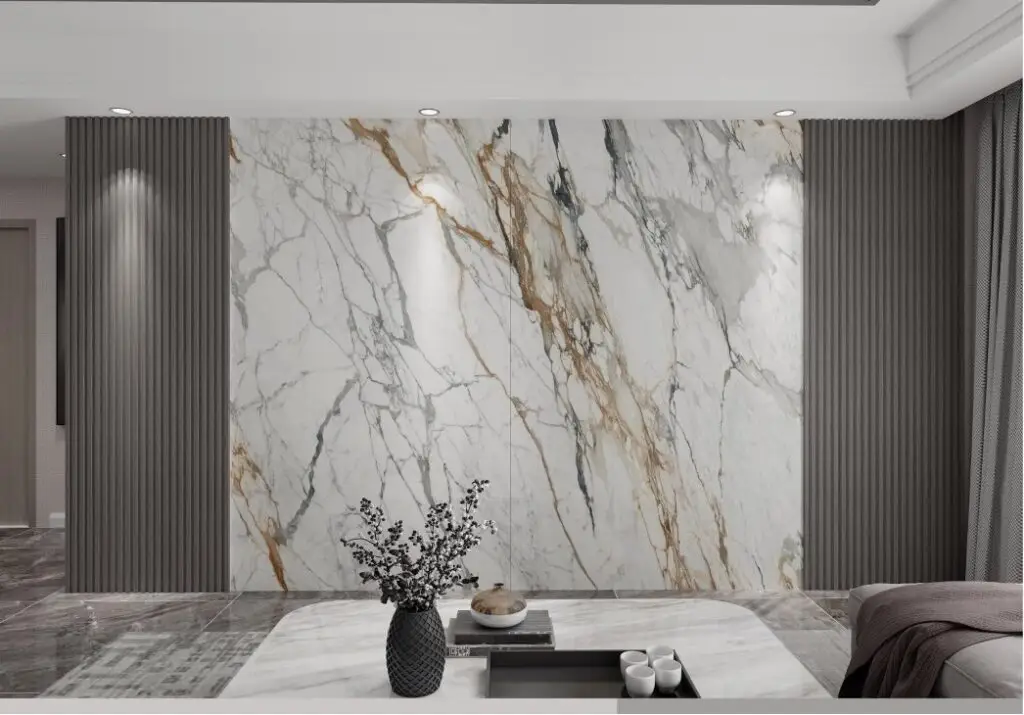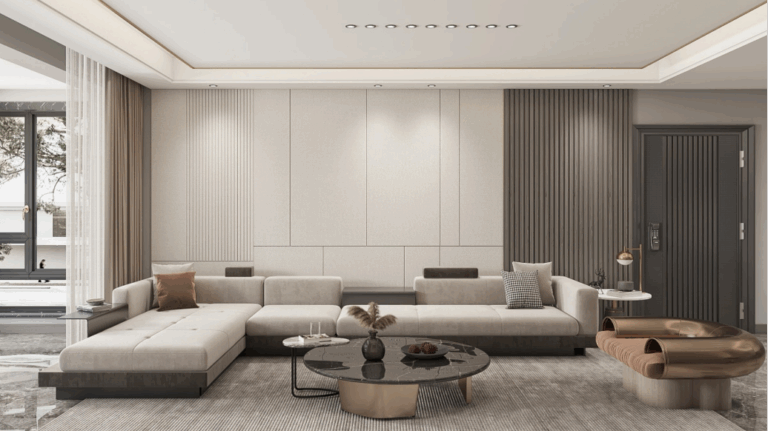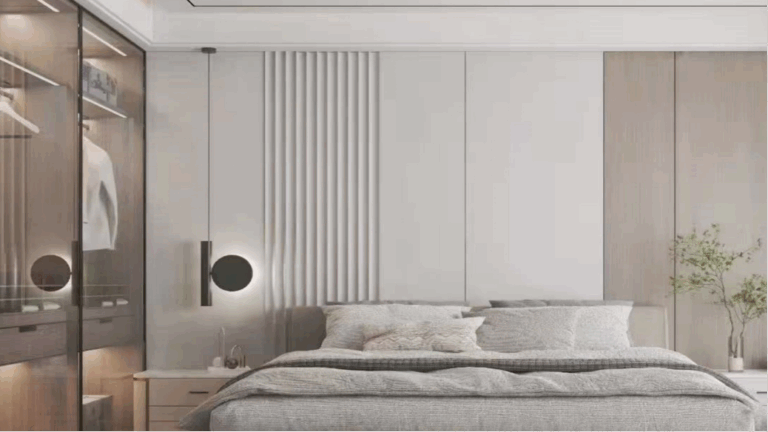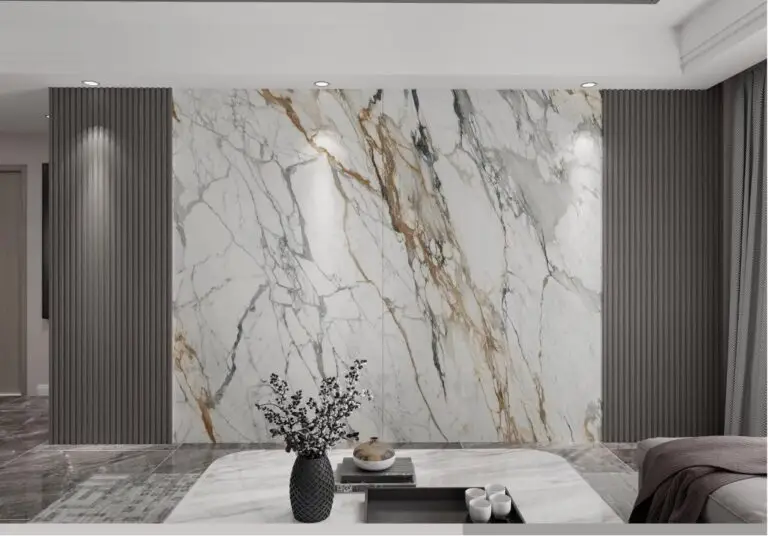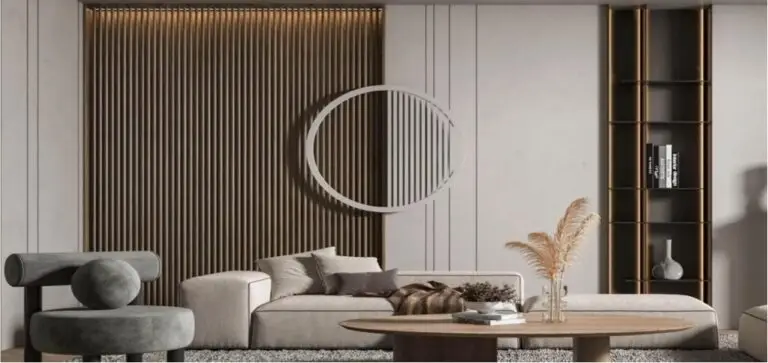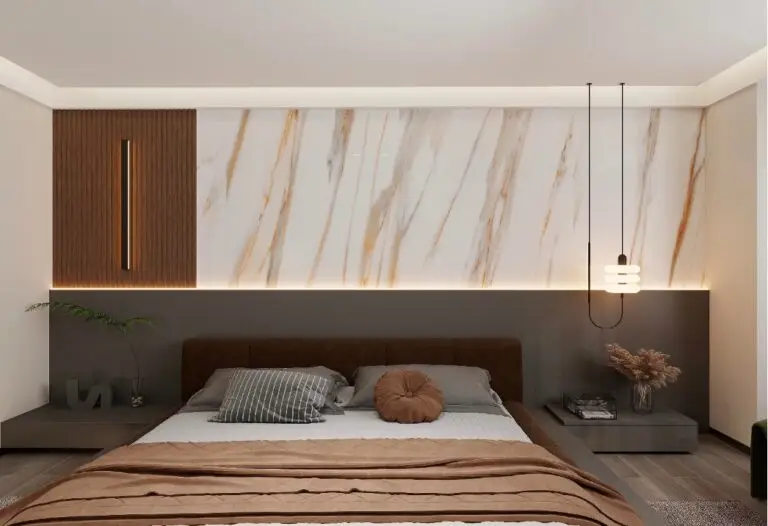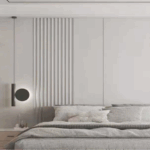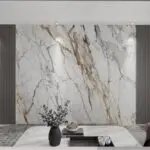1. A Clever Solution for Irregular Areas
Natural marble is hard and brittle. When processed for curved surfaces or column wraps, it often cracks and chips at the edges. Processing is very difficult, and costs are 3 to 5 times higher than for marble-patterned UV panels. But UV panels are highly adaptable. We use hot bending technology to process them. They can bend into curved shapes. The minimum bending radius is just 50mm. So, they perfectly fit cylindrical or square column surfaces. After sealing the seams with a color-matched sealant, the visual effect looks almost identical to natural marble columns.
Here’s a real-world example. A hotel lobby had four columns with an 80cm diameter. We covered them with light gray marble-patterned UV panels. The construction period was only 3 days. This saved 10 days compared to natural marble cladding. Costs were also reduced by 60%.
In addition, UV panels work well for curved walls and archway trim. CNC cutting and hot bending technology can customize matching curves. The panels are 5-8mm thick and won’t crack after bending. When paired with natural marble flooring, this creates a layered combination: “natural marble on the floor, UV panels on the walls.” This not only saves money but also eliminates the risk of natural stone falling from the walls.
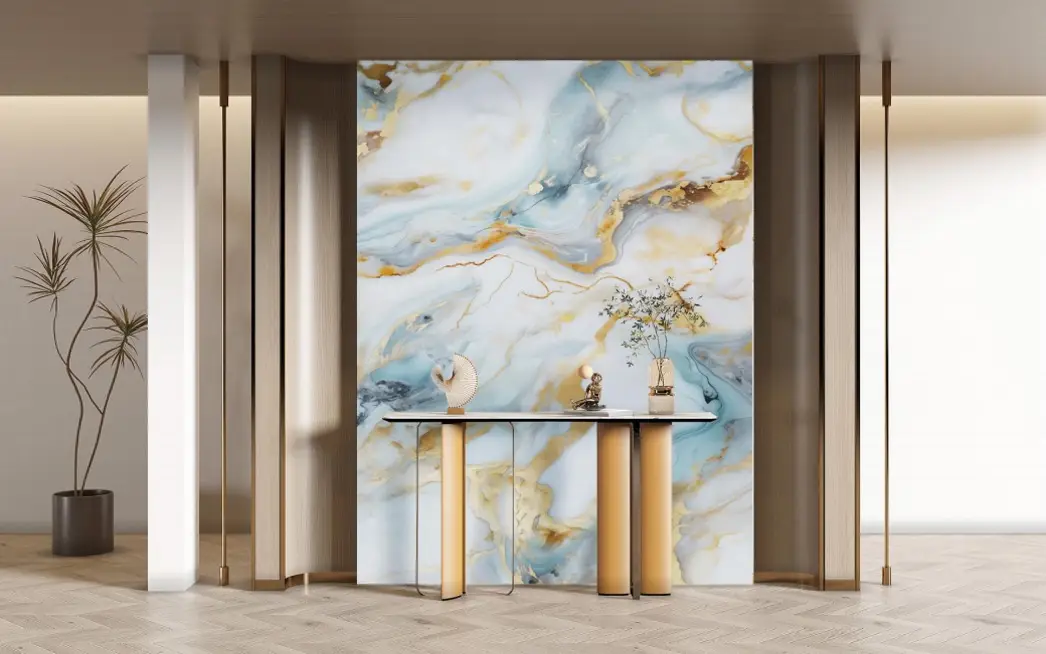
2. The Safe Choice for High-Location Decoration
A single piece of natural marble weighs 30-50 kg/m². When installed in high locations (above 2.5m), it needs extra reinforcement. Over time, it can also fall due to gravity, creating a huge safety risk. In contrast, marble-patterned UV panels only weigh 3-5 kg/m². This makes them much more suitable for high-location decor.
In decorative areas like living room or dining room ceilings, you can use marble-patterned UV panels instead of natural stone. They fix to light steel keels with clips and don’t require heavy support. The UV panel surface resists stains and is easy to clean. This solves the problem of high-up natural stone being difficult to maintain due to dust buildup.
Here’s a project case. In a residential decoration project, we used dark brown marble-patterned UV panels as decorative trim on the ceiling edges. They were paired with light brown natural marble flooring. The overall style was consistent. The safety factor increased by 80%.
For walls over 3m high, using all natural marble requires sectional installation. Reinforcement costs are also very high. A better solution is “local natural marble accents + large-area UV panel coverage.” The lower part of the wall (below 1.2m) uses natural marble, and the upper part uses same-color family marble-patterned UV panels. A waistline transitions the two. This keeps the stone texture and also reduces overall weight and cost. Construction efficiency improved by 50%.
3. A Reliable Substitute for Suspended Structures
For suspended decorative structures, like floating TV cabinet panels or overhanging bar sections, natural marble requires complex load-bearing brackets. It’s also prone to cracking from uneven force distribution. Marble-patterned UV panels can be combined with multi-layer solid wood boards or aluminum honeycomb panels. This creates a lightweight yet strong suspended material.
When making a floating TV cabinet panel, we use a composite structure of “UV panel + 18mm multi-layer solid wood board.” The UV panel surface has a marble texture. The total thickness is 22mm, and the weight is only 8 kg/m². It fixes with hidden metal hangers and can bear up to 20 kg. This saves 70% of the bracket cost compared to a natural marble suspended structure, and there’s no risk of cracking.
For the overhanging part of a bar (extending 30-50cm), we use a composite panel of “marble-patterned UV panel + aluminum honeycomb core.” The total thickness is 15mm. The aluminum honeycomb core effectively distributes force. The UV panel surface mimics marble texture. When paired with the natural marble countertop of the main bar, it creates a seamless visual connection. This balances both safety and aesthetics.
II. Integration Techniques: Play to Strengths, Avoid Weaknesses
1. Texture and Color: Use Contrast to Create Layers
Marble-patterned UV panels can simulate textures with over 90% accuracy. But there are still differences from the random patterns of natural marble. Forcing a “similar color and texture” effect can easily make the space look cheap. Instead, we recommend creating contrast with “large color differences + different textures.” This highlights the strengths of both materials.
On color: If the floor uses light gray natural marble (like Statuario White), the walls or cabinets can use dark gray marble-patterned UV panels (like Dark Grey Vein). This uses light-dark contrast to enhance spatial layering. If the floor uses warm yellow natural marble (like Crema Marfil), pair it with cool white marble-patterned UV panels. This uses warm-cool contrast to elevate the design.
On texture: Choose natural marble with complex textures (like landscape-patterned marble). Pair it with UV panels that have simple textures (like straight-grain marble imitations). This avoids visual confusion. For example, use a natural, landscape-patterned marble as the center panel on a feature wall. Frame it with straight-grain marble-patterned UV panels. This creates a clear focal point and a more luxurious feel.
2. Process Complementarity: Avoid UV Panel Processing Flaws
The beveling and edge-grinding accuracy of UV panels are lower than natural marble. If a design needs lots of bevels, prioritize natural marble. Use UV panels for flat surfaces or simple shapes. For example, use natural marble to process 45° bevels and curved bevels on window sills and countertop edges. UV panels are good for flat surfaces like cabinet doors and wall panels.
You can also use natural stone for edge trimming. On the inner/outer corners and edges of UV panel walls, use 1-2cm wide natural marble trim strips. This solves the problem of unfinished UV panel edges. It also enhances the quality of the details with the texture of natural stone. For example, use natural marble inner corner strips to transition between UV panel walls and ceilings. This avoids rough edges from direct UV panel cutting.
III. Construction & Acceptance: Ensuring Long-Term Stability
1. Base Treatment: Different Materials, Different Needs
For a UV panel base: The wall base must be flat (with an error of no more than 2mm). The wooden base must have a moisture-proof primer. In damp areas like bathrooms, a PE moisture-proof film must be on the back of the UV panels. This prevents the base from deforming due to moisture.
For a natural marble base: Walls or floors where natural marble is installed need load-bearing reinforcement. For example, walls can be fixed with a steel frame and dry-hanging adhesive. Floors should be leveled with cement mortar (thickness ≥30mm). This ensures a load-bearing capacity of no less than 50 kg/m².
2. Joint Treatment: Different Materials, Different Methods
When splicing large UV panels, leave a 2-3mm expansion gap. Fill it with elastic silicone sealant. This prevents cracking from thermal expansion and contraction. At the junction with natural marble, leave a 1mm gap and fill it with color-matched sealant. This prevents later displacement.
Natural marble splicing can use “seamless treatment.” Fill gaps with a special glue, then polish and buff. This creates a process contrast with the visible seams of the UV panels. This highlights the elegance of the natural stone.
3. Acceptance Checklist: Check Key Points for Quality Assurance
When accepting UV panels, check these key points. Check the surface gloss (deviation ≤5GU), look for scratches (test with a 2H pencil), and check the flatness of the joints (error ≤0.5mm). Wipe the surface with a damp cloth to check for discoloration or watermarks.
When accepting natural marble, focus on these points. Check the installation firmness (no looseness or hollowness), joint flatness (error ≤0.3mm), and whether the surface has cracks (check with a strong light). In damp areas, test the waterproof performance (24 hours of water retention without leaks).
Summary
The integrated decoration of marble-patterned UV panels and natural marble is about “playing to strengths and avoiding weaknesses.” UV panels break through the application limits of natural stone. Natural marble enhances a space’s texture. This combination controls decoration costs and creates a high-end space that balances safety and aesthetics. It’s perfect for mainstream styles like modern minimalism and light luxury.

